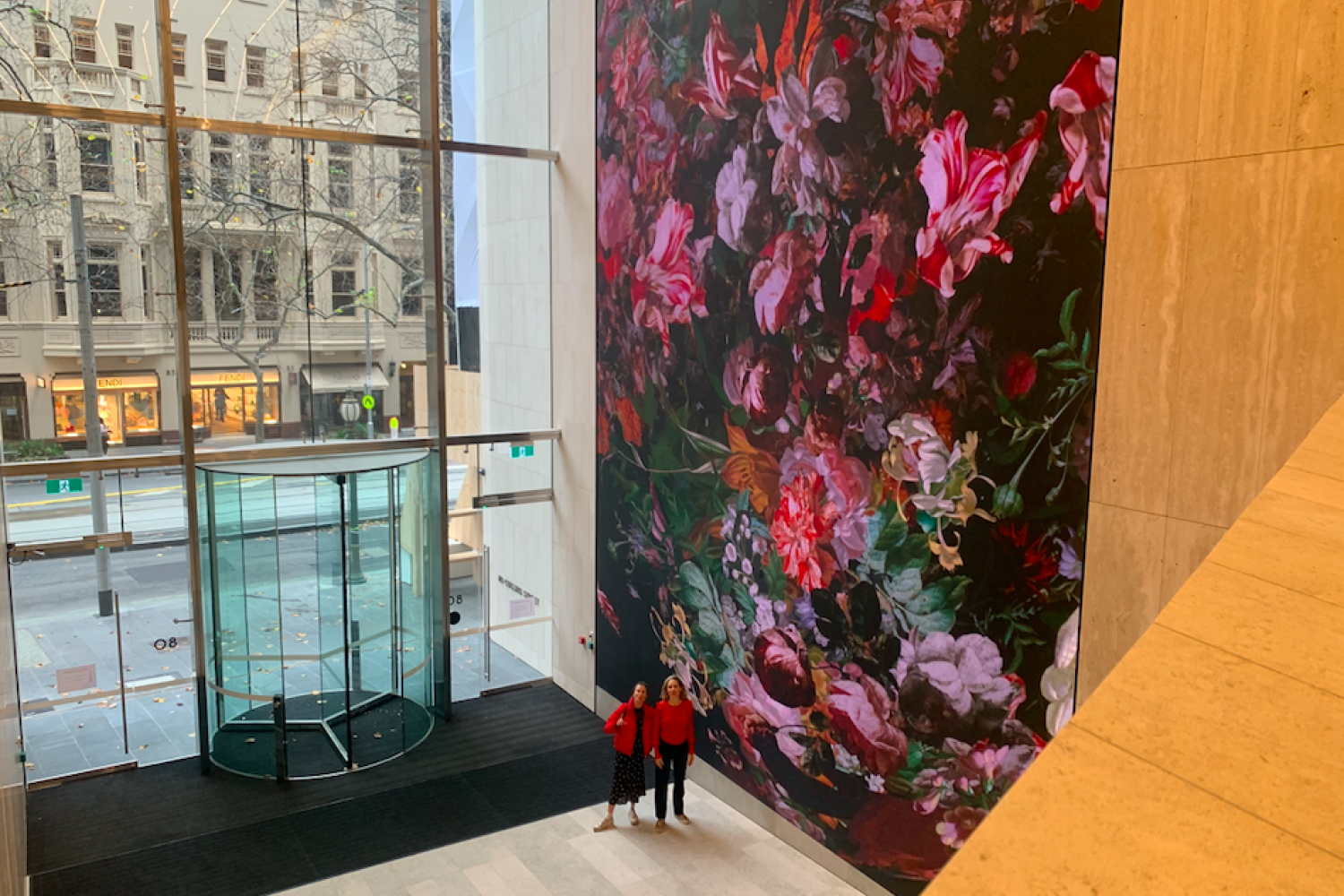
Digital art in public spaces can do more than simply brighten up a piece of urban infrastructure or be a nondescript ornamental piece. It can and should add meaning to a space and have a role in connecting community to place – whether that is a lobby or a community space.
Art Pharmacy engages with a curatorial process that takes into consideration staff, client, and visitor experiences within a broader context of place. This individualised approach is marked by an understanding that digital art serves different purposes in different areas and can contribute to individual and collective experiences in different ways.
When curating digital art content and experiences, it is important to make sure that the piece’s social and artistic dimensions are not only site specific, but also audience and brand specific.
In developing digital art installations, it’s worth considering:
- Is the piece for the benefit of those who frequent the space on a daily basis or for those just passing through?
- Is the piece meant to blend into the background of an individual’s everyday visuals, forming an environment people are unaware of? Or actively stake a claim over the space and a person’s gaze?
- What is the intended emotional experience for viewers?
- How should the viewers feel once they have left the space?
- What should viewers remember about the space in the weeks or months to come?
Navigating the line between engaging creative content and creating a multimedia experience that is still consistent with your brand story is increasingly more difficult as people become more savvy to advertising content. Increasingly, people are able to discern even the most creative advertising content as advertising, and they then dismiss it and relegate it to the dim corners of their awareness. Taking an art curatorial approach, however, is much more engaging and can filter through for more critical awareness.
This approach is reflected in our recent work at 80 Collins St, Melbourne. This project involved multi-disciplinary collaboration between artists, programmers, and engineers to create a large-scale immersive digital screen in the foyer of newly constructed South tower.
Five different artists and collectives explored the concept of scale in nature and sought to encourage new perspectives on a micro and macro level.
The digital art screen, being located in such a central position and seen by hundreds every day, has the potential to bring staff, clients, and visitors back to an awareness of the immensity and expansiveness of the world around us. Natural features which are all too often rendered invisible in urban contexts are now made an integral part of the urban landscape.
The installation also occurs in parallel to the idea that lobbies are liminal spaces; places of transit where people are always moving and are always temporary. The eddies and currents displayed digitally echo the movement of people in the space around it.
A central challenge in the curation of this project was defining the way in which the curation supported the building brand – we have found this is a common challenge for asset managers: should art curation support a building’s branding, or the brand of the asset manager? Which is more important to company goals and marketing strategies that are in place? Is the art intended to impress visitors, engage with tenants, or contribute to foot traffic for food and beverage offerings? Often it can need to meet several goals at once, which is where purposeful curation and integration with other strategies comes in.
Of course, digital art is not just for corporate spaces – it can also elevate important community stories in a broader public art context. Within a city’s shifting human geography, digital art in public spaces is a way to ensure that key elements of local histories and culture remain part of the contemporary urban landscape.
Take the upcoming NSW Metro Art Project, for instance. A collection of artists are set to develop a series of screen-based artworks for several stations across the Sydney Metro. What underlies this project is an understanding that art has the ability to enhance a customer’s experience of public transport hubs and to further enrich the cultural life of these places.
Both the 80 Collins St project and the NSW Metro Art Project show just how expansive the layers of experience are that digital art can provide.
Lobbies and transitionary spaces are the perfect canvas for high-impact and meaningful experiences of our shared environment. We might just be passing through, but we still crave connection and remember strong story-telling. What will people remember about your place?







